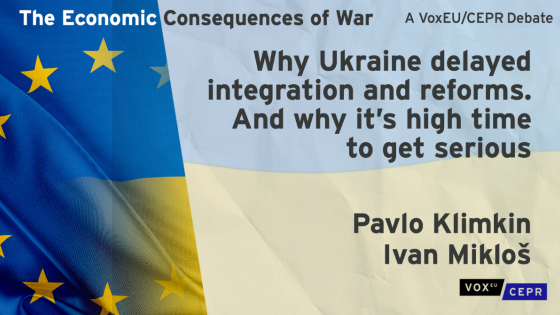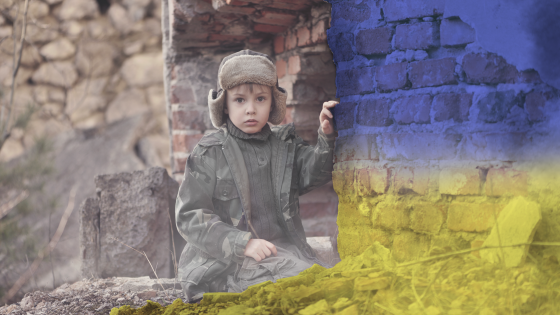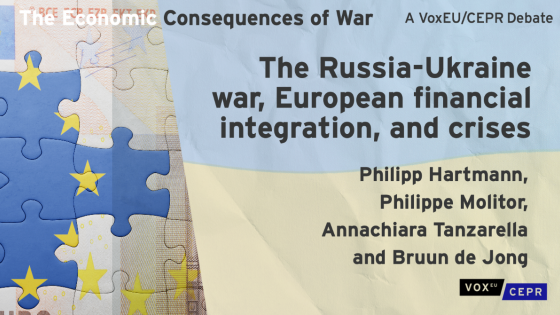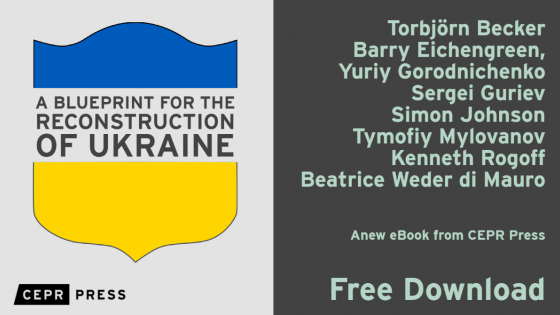Any European country can become an EU member state if it meets the conditions (the 'Copenhagen criteria') for membership, which include a stable democracy, the rule of law, a functioning market economy, and acceptance of EU legislation. Certainly these conditions are necessary, but not sufficient. In the end, the admission decision is political: governments of existing EU member states should agree on adoption of new members.
The first necessary condition for joining the EU is the country's willingness to join. Other conditions cannot be met (especially in post-communist countries) without fundamental reforms. This is also one (though not the only) reason why there is such a strong and reciprocal relationship between EU integration and reforms.
One of the main reasons for Ukraine's lack of progress in EU integration (but also in reforms) after the fall of communism and gaining independence in 1991 was Ukrainians' lack of desire to belong to the West and to be part of the EU. The country was divided at the time. Part of it was pro-Western (especially the more educated, younger, and urban populations). However, an approximately equally large part (mainly less educated, older, and rural populations) preferred closer cooperation with Russia. An important role was also played by influential economic and political elites (oligarchs and politicians linked to them), who had an interest in the continuation of the corrupt oligarchic system which brought them great benefits and which would be threatened in the event of preparation for and accession to the EU.
All this has changed fundamentally with the Revolution of Dignity in 2013/2014, the Russian annexation of Crimea in 2014, and even more dramatically since the invasion of Ukraine by Russia in February 2022. Public opinion turned – first after 2014 by a majority, and from February 2022 onwards in a fundamental and unequivocal way – in favour of joining both the EU and NATO. Not only that, but Ukraine has also become the first and only country whose citizens are willing to sacrifice their lives for the Euro-Atlantic future of their country under the EU flag.
In our chapter in the CEPR eBook Reconstruction of Ukraine: Principles and Policies (Gorodnichenko et al. 2022), we argue that Ukraine’s after-war reconstruction should be intertwined with its EU integration.
Experience of other countries
The experience of other Central and Eastern European countries with the same or similar institutional history of decades of communist rule and centrally controlled economies is particularly relevant for Ukraine.
Political economy usually distinguishes two types of post-communist transition strategies: radical and gradualist. However, in our view, there were three types – the third being spontaneous transformation (Miklos 2021).
A radical (big bang) transformation (also called ‘shock therapy’ by its critics) took place in Poland, Czechoslovakia, and the three Baltic countries. Only in Slovenia and Hungary did a truly successful gradualist (gradual, slow) transformation take place. This was possible because these countries had already carried out some partial pro-market economic reforms at least two decades before the collapse of communism. In all the other countries (Bulgaria, Romania, Ukraine, and all the post-Soviet countries except the Baltics), a spontaneous transformation took place after the fall of communism.
The spontaneous transformation was characterised by the absence of a well thought out, top-down strategy for building a new institutional framework for a market economy (through government and parliament), chaos, high inflation, wild (spontaneous) privatisation, insolvency, extortion, and other criminal activities. During the spontaneous transformation, economic and later political power was mostly in the hands of people from the communist political and economic nomenklatura, the communist secret police, and organised crime.
Only two countries – Bulgaria and Romania – managed to escape from the trap of spontaneous transformation, in both cases mainly because of European integration. Although they joined the EU three years later (in 2007) than the other countries with radical and gradualist transformations, it was thanks to the pressure to meet the Copenhagen criteria that they were able to escape the trap of spontaneous transformation. Another example is Slovakia: although it successfully managed the beginning of its transformation as part of Czechoslovakia, following the split in 1993, the policies of the anti-reform government of Vladimir Meciar led in 1997 to Slovakia’s exclusion from the first group of countries negotiating EU accession. All other political parties mobilised and joined together with the support of civil society, and after the 1998 elections a broad coalition of nine parties was formed that erased the integration deficit, implemented the necessary reforms, and allowed Slovakia to join the EU as part of the first group in 2004. However, without the ‘European integration anchor’, it would not have been possible to make the necessary difficult reforms in a broad nine-party coalition and to keep the coalition together.
Where does Ukraine stand with reforms today?
In Ukraine, spontaneous transformation created a textbook example of a dysfunctional, corrupt oligarchic system that resisted all attempts at reform until 2014. It was only after the Revolution of Dignity that change came, when real and fundamental reforms first began to be made. By the outbreak of full-scale war in February 2022, the results were obvious and unquestionable in some areas, partial in others, and still insufficient in the rest. The first group certainly includes macroeconomic stabilisation and stability, the cleaning up of the banking sector, a professional and independent monetary policy of the central bank, and public procurement through electronic auctions. The second group includes a partial reduction of the scope for grand corruption, pension reform, health reform, decentralisation, and deregulation. The third, insufficient group includes the lack of reform progress in the judiciary, law enforcement, protection of property rights, change in the functioning of law enforcement agencies, and interconnection of political and economic power. The lack of sufficient progress in these areas, but also their importance, is evidenced by the fact that six of the seven recommendations made by the European Commission on the occasion of the granting of candidate status to Ukraine in June 2022 relate to these very areas.
The importance of these reforms is also clearly demonstrated by the fact that, despite reform success in other areas and despite the enormous untapped potential of the Ukrainian economy, foreign direct investment (FDI) inflows have remained minimal. Also, as a result of that, economic growth has been low and convergence with EU member states from Central and Eastern Europe has been insufficient.
War, reform, and integration
War has changed almost everything, bringing huge human and material losses and damage. At the same time, it has united and brought together Ukraine and Ukrainians not only in a just struggle against the aggressor but also in the desire for a European future.
For this desire to be fulfilled, first the military actions must come to an end. Then Ukraine will have to tackle three tasks, each of which is a major challenge. These are post-war reconstruction and modernisation, reforms, and European integration.
These processes are interlinked and interdependent. Successfully managing them in an environment of still relatively weak institutions will be a significant challenge that will be impossible to complete without close cooperation with foreign allies and international organisations, and without strengthening the political elites' own will to push for the necessary changes and reforms.
The case of Ukraine is unique as it got the membership perspective while the war is still being waged. Moreover, Ukraine is the first country to start the accession that was, and still is, considered by some as a post-Soviet country. The Baltic countries are not perceived as ‘purely’ post-Soviet. That means that the EU’s decision to grant such a status has been a geopolitical one. At the same time, it is futile and even dangerous to expect any ‘geopolitical discounts’ on reforms or the accession as they would not help either Ukraine or the EU, but rather weaken both. On the contrary, the geopolitical significance would probably require even higher standards for Ukraine both in quality and speed of reforms.
While official resources will be enormous, private foreign direct investment will also need to be attracted to Ukraine for successful post-war modernisation. Without private foreign investments, success will not be possible, and these investments will depend crucially on progress in European integration and reform. The key benchmark here will be a genuine commitment to embracing rule of law principles as they exist in the EU and the ability to keep showing real unmistakable results.
A major challenge facing the government will be the transition from (war-necessary) centralised control and command to outsourcing and cooperation in the preparation and management of the country's reconstruction and modernisation, as well as in the preparation and implementation of reforms. For without reformers, reforms cannot be made, and without outsourcing, the barrier of weak domestic institutional capacities cannot be overcome. Another, or rather complementary, way of sorting it out would be to create common institutions focused on recovery but naturally embracing EU accession as they profoundly overlap.
However, besides the difficulties and risks described above, Ukraine also has very strong positive preconditions for managing the process of reconstruction, reform, and integration. Ukraine is a large country with a huge number of talented, well-educated people who have gained valuable experience in reform, integration, and investment projects in recent years both abroad and in the domestic business, governmental, and non-governmental sectors. Also, the EU, Western partners, international financial, and other institutions have gained, especially in the post-2014 period, a huge amount of experience and knowledge about Ukraine's realities, needs, opportunities, and constraints. It will be equally important to learn from the good experiences (e.g. the Marshall Plan after WWII) as well as the bad experiences (e.g. the post-war reconstruction of Iraq and Afghanistan) of post-war reconstruction in other countries.
The war has shifted the sense of partnership between the West and Ukraine towards relations as allies. As we are not fully there, we have to keep building up trust as a basis for this relationship and the necessary component to create a common success story – Ukraine becoming a full and indispensable part of the Western community.
References
Gorodnichenko, Y, I Sologoub and B Weder di Mauro (2022), Rebuilding Ukraine: Principles and Policies, Paris Report 1, CEPR Press.
Miklos, I (2021), “Three Models Of Post-Communist Transformation And Lessons Learned”, Central European Business Review 10(2-special).



